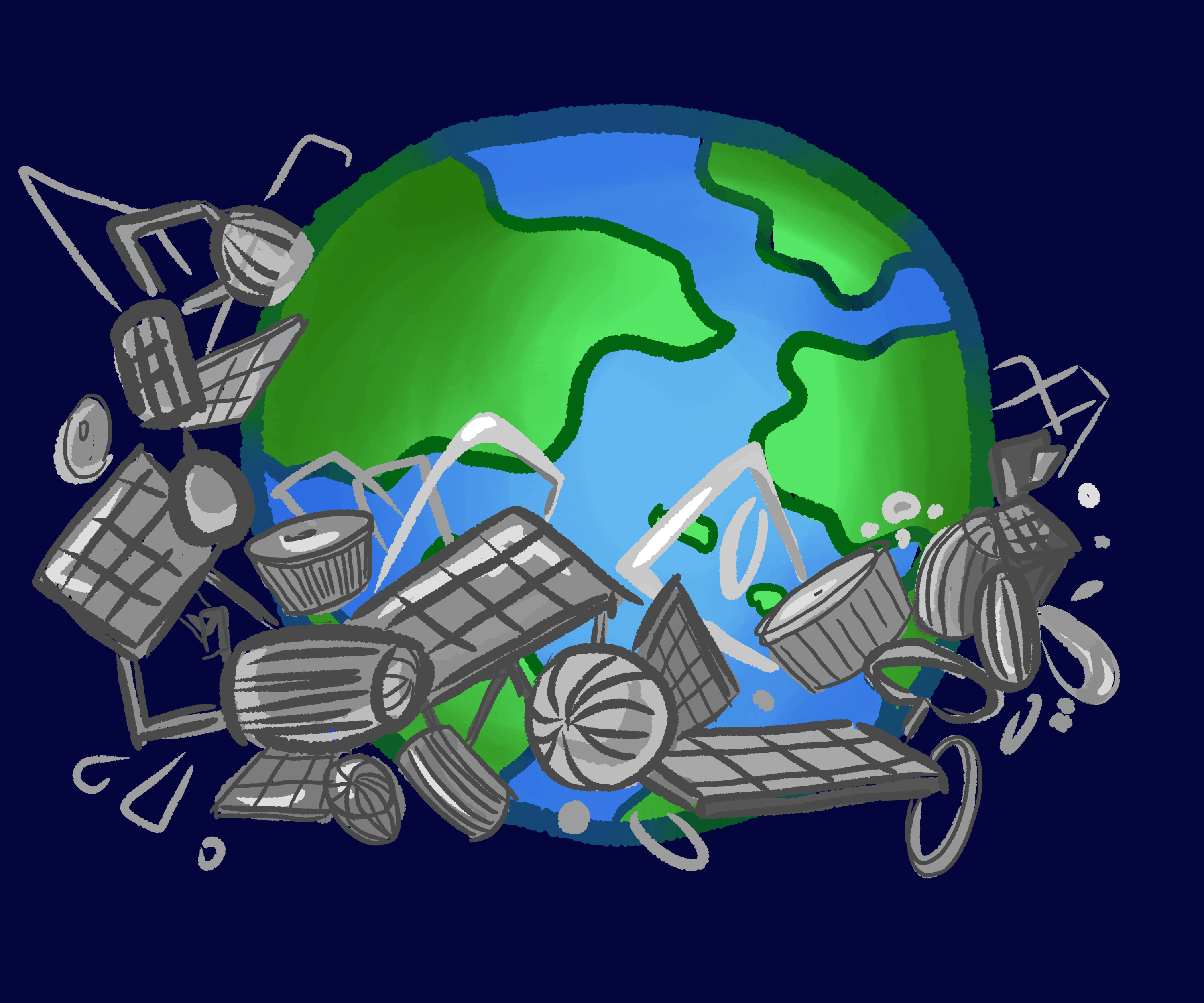My father, a huge Trekkie, once hypothesized that the purpose of the shields used in battle on the USS Enterprise was to protect the ship from the massive amount of dead satellites and other junk that would be orbiting Earth by the twenty-third century. This may have been an incredulous thought when the original run of Star Trek broadcast through the clear skies of the 1960s. But, with every new rocket launch, it is looking more and more likely that my father might be right.
In the decades since Sputnik 1 launched on October 4, 1957, humanity has been obsessed with catapulting machines into orbit. In fact, the United Nations Office for Outer Space Affairs maintains an index of all the objects humans have ever launched into space. The current count stands at 8,074 items, ranging from the original Sputnik right up to Elon Musk’s Tesla Roadster.
As these leftovers age, pieces break off and components degrade, allowing low Earth orbit to gain its very own scrapyard. We are on track to have a veritable minefield for future voyagers of the final frontier. Altogether, NASA is tracking more than 500,000 pieces of assorted space debris orbiting Earth at various levels.
Space explorers of the twenty-first century use two types of tools: grounded telescopes and instruments that need to be launched into space. Astrophysicists on the ground are not yet overly worried about the issue of space debris. The sky is not so polluted that it causes visibility problems, and the dominance of non-optical telescopes circumvents the issue entirely.
“It is true that astronomers want the area surrounding the earth to be free of debris that could affect space telescopes,” wrote Dunlap Institute Fellow Dr. Tyler Natoli in an email to The Varsity. “But that is not a thing most astronomers spend time thinking [or] worrying about.”
Exhibiting more concern are the rocket engineers looking to navigate their own spacecraft beyond the stratosphere.
The accumulation of space debris “has been on the radar for quite a while, and it will only continue to become a bigger problem,” wrote Victor Nechita, Project Manager for the Space Systems Division of the University of Toronto Aerospace Team, in an email to The Varsity. “Think of it like a numbers game, the more debris you have whizzing around the earth, the more likely it is to collide with a functional satellite, and in turn creating more debris. This will only become a bigger problem as companies like SpaceX plan to send up 12,000 satellites in the coming years.”
The mention of SpaceX does raise a number of concerning points. As the possibility of success and profit for space companies becomes increasingly apparent and exhilarating, startups are popping up as quickly as oil wells in early twentieth century Texas. Paralleling the use of fossil fuels for decades before negative consequences were even considered, these questions must be asked: are we polluting the skies too fast, and whose job is it to clean it up?
“There are currently international guidelines in place for satellites that state within 25 years after its operational life ends, the satellite should burn up in the atmosphere. However, the key word is should. About [a] third of the satellites don’t follow this guideline,” wrote Nechita. “I think it lies in the governments and space agencies to determine the appropriate methods to solve this problem… Satellites are so critical to our daily lives that I find it hard to imagine that this will not continue to be something that is a top priority for both governments and space agencies to address.”
But pessimism at this current stage is also undue. Nechita stressed that there are entire organizations, such as the Inter-Agency Space Debris Coordination Committee, working to solve this specific issue. The adventures of Captains Kirk and Picard are brought to mind by one solution currently being tested by the European Space Agency: a sci-fi-esque shield created by layering metal fibres.
Instead of glumness, one should really appreciate the fact that we live in a time where spaceflight is expanding to the extent that we need be concerned about the debris at all. “I think [it’s] given a lot of people the excitement they’ve been missing from space exploration,” wrote Nechita.


